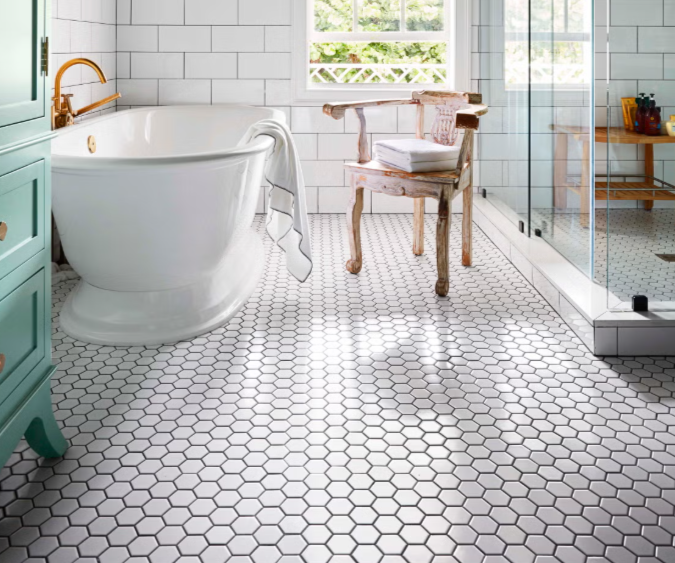Bathroom Renovation Ealing
Bathroom renovation is a journey that blends practicality with design, resulting in a space that supports comfort, efficiency, and personal taste. Among all home improvement projects, the bathroom stands out as one of the most used and necessary rooms to upgrade. When planned well, a new bathroom can change how the entire home feels, offering a refreshed environment that serves both function and relaxation. Undertaking a successful bathroom renovation in Ealing requires clear planning, realistic expectations, and an understanding of materials, layout, and workflow.
One of the first considerations in any renovation is identifying why the upgrade is needed. Often, it comes down to issues with space, age, or performance. Fixtures might be outdated, tiles may show signs of wear, or the layout no longer suits the household’s needs. In some cases, renovations are driven by a desire to increase property value or adapt the space to new users, such as children or elderly family members. Whatever the reason, clear goals help inform every decision, from the layout to the style of fittings.
The layout is perhaps the most important part of the renovation process. Changing the arrangement of elements like the bath, toilet, sink, or shower has a direct effect on how the room feels and functions. In small bathrooms, moving the entrance or repositioning the basin can make the area feel more open. Larger spaces offer more flexibility, allowing the creation of zones such as wet and dry areas for better organisation. A well-considered layout ensures that every square metre supports usability and comfort.
Material selection comes next. In a high-moisture environment like a bathroom, surfaces need to be resistant to water, heat, and cleaning products. Tiles, wall panels, and flooring options should be chosen not just for visual appeal but also for their durability and slip resistance. Porcelain tiles, for instance, are a popular choice for floors due to their toughness, while stone-effect panels can offer a premium look without the challenges of natural stone. Materials also influence lighting and acoustics, contributing to the overall experience of the room.
Storage is another important aspect to address during renovation. Lack of storage leads to clutter, which quickly makes a bathroom feel disorganised and smaller than it is. Modern renovation plans often include recessed shelving, vanity drawers, or wall-hung cabinets to free up floor space. Smart storage solutions can keep everyday essentials within reach while maintaining a clean, tidy appearance.
Lighting plays a crucial role in shaping the bathroom’s ambiance. Overhead lights are common, but they should be paired with task lighting around mirrors or accent lighting in alcoves or under cabinets. The type of bulb, placement of fittings, and even colour temperature all contribute to how the space is used and perceived. Daylight bulbs may enhance visibility, while warm lighting can create a calming mood for evening routines. Dimmable options offer even more flexibility, allowing the user to adjust brightness according to need.
Ventilation should never be overlooked. A bathroom without adequate airflow is prone to dampness, mould, and material degradation. Renovation is the ideal time to upgrade or install an extractor fan, particularly in rooms without a window. Many modern ventilation systems are energy-efficient and come with features such as humidity sensors or timers, helping maintain air quality while reducing power consumption.
Heating solutions should also be evaluated. Underfloor heating adds comfort, especially on cold mornings, and helps dry out the room quicker. Heated towel rails serve dual purposes keeping towels warm and reducing moisture in the air. Choosing between electric and water-based systems depends on the broader heating setup of the home, but either can be integrated during renovation with minimal disruption.
A renovation also offers the opportunity to improve sustainability. Water-saving fittings, such as dual-flush toilets or aerated taps, can reduce consumption without affecting performance. LED lighting and motion-sensor switches enhance energy efficiency. Even the choice of materials from recycled glass tiles to FSC-certified timber can reflect an environmentally conscious approach to design.
The choice of fittings and fixtures should align with both style and use. Whether opting for a minimal, contemporary look or something more traditional, fixtures need to complement the overall aesthetic while supporting daily function. Wall-hung toilets, rimless pans, freestanding baths, and sensor taps are just a few modern features that can elevate the experience without complicating usage.
Another consideration is soundproofing. Bathrooms located near bedrooms or living areas may benefit from acoustic insulation in walls and floors. This helps contain sounds from plumbing and activity, contributing to overall home comfort. Modern renovation often includes this aspect, especially in multi-family buildings or flats.
Budget planning is a crucial component of renovation. Unexpected costs can arise due to hidden damage, plumbing adjustments, or structural changes. Having a clear financial framework helps prioritise where to invest and where to simplify. For example, spending more on long-lasting flooring or a high-quality shower valve may be more beneficial than choosing the most expensive vanity unit.
Project management is another layer that contributes to a smooth renovation. Coordinating different trades plumbers, electricians, tilers, joiners requires planning and communication. Delays in one area can affect the entire timeline, so a structured schedule is essential. Some homeowners manage this themselves, while others choose a renovation service that handles all aspects from design to installation.
Timeline expectations vary depending on the size and scope of the work. A simple refresh might take a few days, while a full-scale renovation involving layout changes and new plumbing can stretch over several weeks. Factoring in lead times for materials and allowing for unforeseen delays ensures a more realistic outlook and a less stressful process.
Technology is increasingly finding its way into modern bathrooms. Smart mirrors with built-in lighting, Bluetooth speakers, and even app-controlled heating or shower systems are options for those seeking convenience and luxury. While not essential, these features add layers of functionality that may suit busy lifestyles or high-end preferences.
Post-renovation care is another point to consider. The longevity of a new bathroom depends on regular cleaning, proper ventilation, and timely maintenance. Choosing finishes that are easy to maintain helps preserve the look and feel of the room. Anti-limescale coatings, mould-resistant grouts, and washable wall finishes contribute to easier upkeep.
Renovating a bathroom is also an opportunity to enhance accessibility. Wider doorways, walk-in showers, grab rails, and raised toilets can all be incorporated seamlessly into the design. These additions are not only useful for households with specific needs but can also futureproof the home.
Bathroom renovation in Ealing reflects a wider trend toward personalising living spaces to support wellbeing. A successful project balances practicality with comfort, aesthetics with ease of use, and ambition with budget. The result is a room that meets the everyday demands of hygiene, routine, and relaxation while also offering a fresh expression of style.

